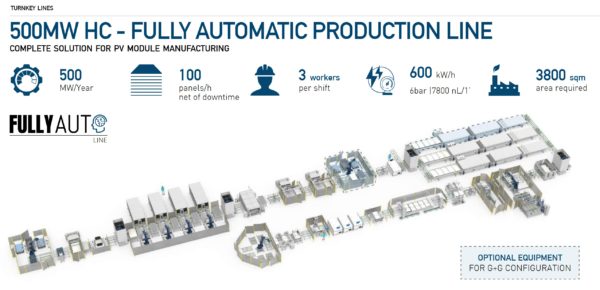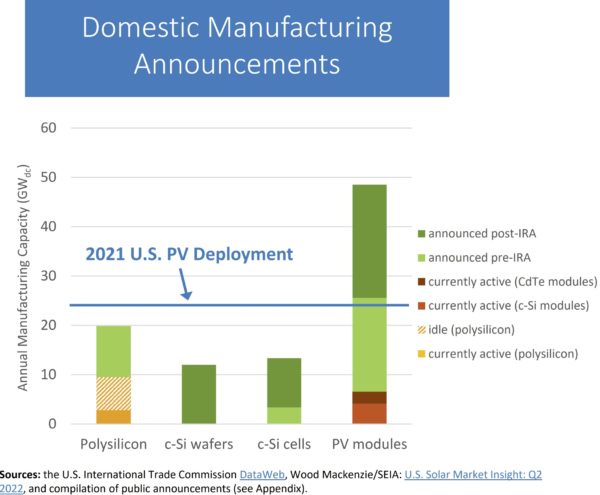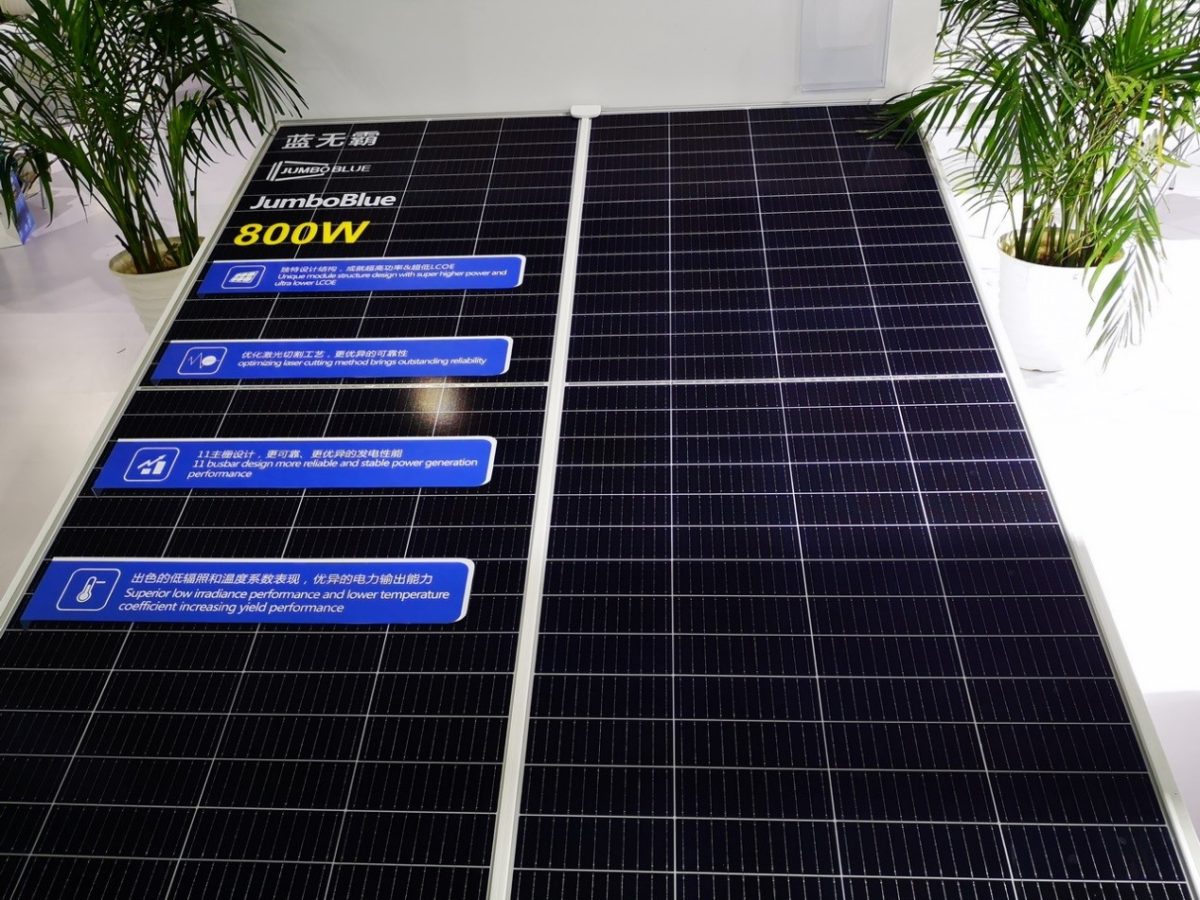JA Solar will spend $60 million to deploy 2 GW of solar module assembly equipment in a leased facility in Arizona. The company is expected to deliver modules to market by the fourth quarter of this year.
The company said it would manufacture high-efficiency products for the residential, commercial, and utility-scale markets. JA Solar’s leading efficiency line, Deep Blue 4.0, is said to be currently available for sale. It was launched as a 22.4% efficiency TOPCon product for the three markets.
Currently, the company’s website lists only Deep Blue 3.0 monoPERC solar modules.
The press release noted that the assembly line would be highly automated, and that the facility would employ 600 workers.

The EcoProgetti Solar Module Manufacturing Line Catalogue lists modules assembly lines ranging from 20 to 500 MW a year of capacity. The 500 MW package above is the largest standard production line the company offers, and is composed of at least twenty unique machines. EcoProgetti notes that it’ll require three shifts running, 24 days a week and 330 days a year to reach the 500 MW a year number.
Per the U.S. Department of Energy’s National Renewable Energy Laboratory (NREL) Fall 2022 Solar Industry Update, (which was released October 27, 2022 and is now woefully out of date), approximately 42 GW of solar module manufacturing capacity had been announced.

NREL’s report notes that of the announced 42 GW, 32.5 GW is slated for the production of standard silicon products like JA Solar, and 9.5 GW is destined for thin film products styled like First Solar. Other steps of the solar panel manufacturing lines announced between ten to fifteen gigawatts of subcomponent manufacturing for polysilicon, wafers, and cells.
JA Solar’s announcements only refer to the assembly of panels, not the preceding subcomponents.
In the last two months, JA Solar has announced three deals valued $4.2 billion in total. The announcements were distributed throughout each of the supply chain stages – ingots, wafer, cells, and modules – totaling over 75 GW of production capacity.
The company is in the midst of a move from 40 GW of module manufacturing capacity at the end of 2021, to 75 GW by the end of this year. They continue to expect cell and wafer manufacturing capacity to make up 80% of their module manufacturing capacity.
This content is protected by copyright and may not be reused. If you want to cooperate with us and would like to reuse some of our content, please contact: editors@pv-magazine.com.









By submitting this form you agree to pv magazine using your data for the purposes of publishing your comment.
Your personal data will only be disclosed or otherwise transmitted to third parties for the purposes of spam filtering or if this is necessary for technical maintenance of the website. Any other transfer to third parties will not take place unless this is justified on the basis of applicable data protection regulations or if pv magazine is legally obliged to do so.
You may revoke this consent at any time with effect for the future, in which case your personal data will be deleted immediately. Otherwise, your data will be deleted if pv magazine has processed your request or the purpose of data storage is fulfilled.
Further information on data privacy can be found in our Data Protection Policy.